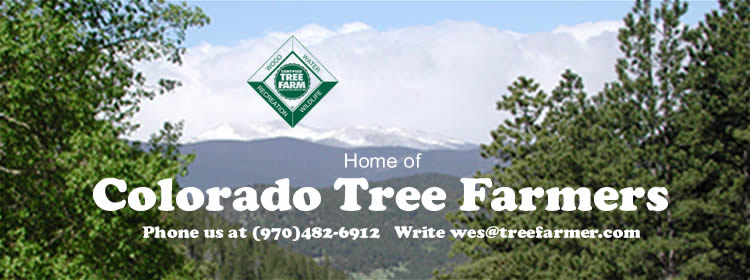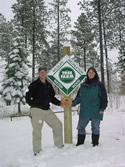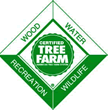

 |
Tree Farmer Alert |
Sunday, August 7, 2011 Over 700 readers and growing! |
Colorado Tree Farmers are a network of land- owners that share forestry resources.

Feel free to forward this alert to a friend.
New readers, if you would like to receive an email alert like this whenever new information about the pine beetle epidemic or any other content is added to our website, write stumpmaker@gmail.com and ask to be added to the Tree farmer Alert email list. It's free!
Cutting Tips During MPB Flightfrom
Ryan Ludlow We are quickly approaching the heart of our annual mountain pine beetle (MPB) flight window (mid-July to mid-Sept). During the flight window there is typically a two week window in mid-Aug. called “mass flight” when a vast majority of MPBs fly concurrently. You should be careful when cutting during beetle flight time because MPBs are moderately attracted to the “smells” of freshly cut pine trees. If you are cutting during flight time extra steps should be taken to avoid inadvertently attracting beetles to your forest. Tips for cutting during flight:
In general, the best time of year (in relation to beetle management) to be in the woods cutting is from October thru mid-March. All species of bark beetles are the least active during these cooler months and much less likely to attack your trees. In addition, cutting in the fall and winter gives you the ability to lay cut logs and slash out in sunny locations to help facilitate the drying of the material; which will make it less attractive to beetles when they begin flying again next summer. You also have the ability to chip freshly cut material back onto the forest floor during these cool months without worry of attracting beetles to your land. Cutting during flight isn’t the best timing for bark beetle management; however if the goals of your cutting project are to improve your defensible space then it is recommend you continue to cut. Our forests are quickly drying out from the hot summer sun and the benefits you gain from creating better defensible space around your home will always outweigh the risk of beetle infestation! Cheers, Ryan ___________________________________________ NFPA's Backyards & Beyond Wildland Fire Education Conferencefrom DoubleTree Hotel Denver, CO October 27-29, 2011 NFPA’s Wildland Fire Operations Division (WFOD) is proud to present the 4th "Backyards & Beyond Wildland Fire Education Conference" in Denver. This conference offers a unique opportunity to build relationships and to explore key issues with more than 50 breakout sessions in five educational tracks. Don’t miss this opportunity to network with other like-minded professionals and to share best-practices that you can take back to your community or workplace.
______________________________________ TAX ISSUESFrom Catching up on some tax news reading and reviewed a recent hobby loss case in Tax Court that once again points out the importance of keeping good records if anyone is concerned about having losses disallowed because they cannot prove a valid profit motive for their tree farming operations.
In this case the taxpayer who lost was in the business of drag racing and had been for many years. His claimed losses in the year being audited were over $100,000, and the number one reason they were disallowed was the Court found that he had no formal business plan, maintained no books or written records, and did not create an annual budget.
Other reasons were cited, including a significant pleasure motive and a miniscule amount of revenue from the activity.
For tree farmers enrolled in the State Forest program, the lack of a business plan and written records should never be a problem if they have a written forest management plan and they at least keep a separate checking account and other normal documents (receipts, bank statements, invoices, etc.) that any business would normally have. An annual budget would be a good idea too, although in this dismal market for wood product sales it would be hard to project a profit. However, just the exercise of preparing a simple budget would be looked on favorably, profit or loss notwithstanding.
With the high likelihood of losses locally by most or all tree farmers, we might start seeing more audits in Colorado and Wyoming, but I'm not aware of any at this time. Still, it is essential to have these types of records on hand if you do get examined, and of course it's impossible to go back two or three years and create bank records, so encourage all the farmers you know to bear this in mind. Contemporaneous log books would also be a huge help in defending yourself in an examination.
|
| Please send your questions regarding any forest management related issues to stumpmaker@gmail.com We'll find an answer for you. |
